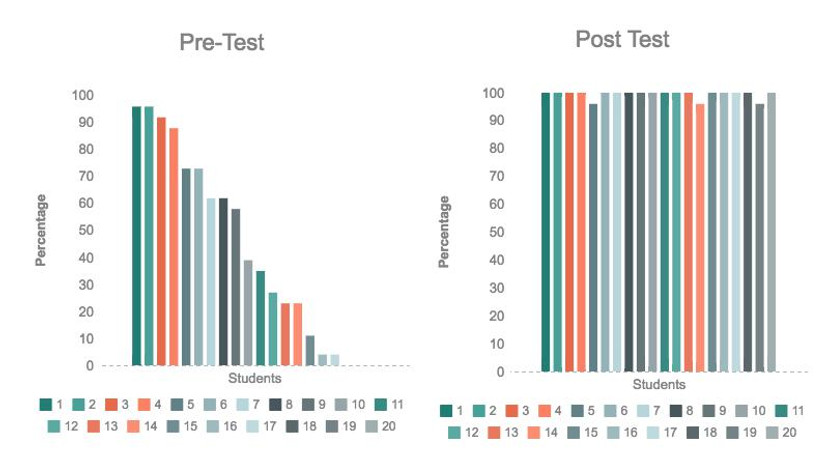top of page

This chart focuses on the pre and post test that were given to students. The pre-test was given in December and the post test was taken on March 10. All students showed growth between the two tests. During the pre-test I only had four students reach an 80% or higher. All students scored a 96% or higher on the post test. The questions that remain are how to keep up student scores with multiplication and what ways can I as their teacher keep having them practice.
I also focused on MAP data as one of my data collection points. Students took the MAP test in the fall and half of the class scored below 189.4 (norm mean RIT). The MAP test was taken again in the spring on May 6 and students scored __________________. This is graph showcases their growth on the MAP test. The questions that remain are how can we continue to see growth in these students as they take the MAP test three times a year? What can I do to ensure that I see growth in years to come?
The last item of data that I focused on was student dispositions about math. Students were given a math attitude survey in December that focused on how they felt about math and whether they enjoyed math or not. The survey was then given again after the completion of math games in March. I chose one question that had a big amount of growth and displayed the change in student attitudes about math. The pie chart below shows the difference. I only had 7 students say that math was their favorite subject before we began the use of math games in the classroom. After the use of math games, I had 16 students say that math was their favorite subject. Research says that math games will increase student interest in math and the games I used in my classroom did just that for my students. The questions that remain are what games can I use for other math concepts to keep my students interested in math? Also, how can I differentiate these games so that all student need are met?

Student attitudes before the implementation of math games

Student attitudes after the implementation of math games
bottom of page